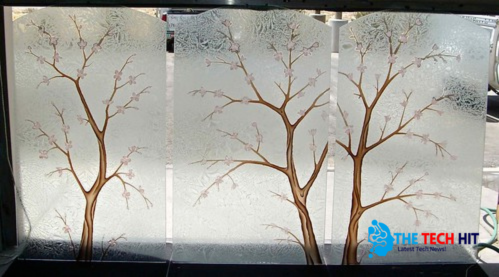Introduction
In the world of interior design and architecture, decorative glass has emerged as a versatile and captivating element, adding a touch of sophistication and functionality to spaces. The United States, with its rich history of architectural innovation and design, has embraced decorative glass as an integral part of its built environment. This article explores the fascinating world of decorative glass in the USA, delving into its history, diverse applications, and the artisans who bring these captivating creations to life.
History of Decorative Glass
The use of decorative glass in the United States can be traced back to the early 19th century. Initially, it found its place in grandiose stained glass windows of churches and cathedrals, showcasing intricate religious scenes and colorful patterns. As the nation evolved, so did the application of decorative glass, expanding beyond religious contexts to adorn residential and commercial spaces.The 20th century witnessed a surge in innovative glass technologies, paving the way for new possibilities in design. The mid-century modern movement, in particular, embraced the use of glass for its transparency and ability to blur the boundaries between indoor and outdoor spaces. Iconic architects like Frank Lloyd Wright incorporated decorative glass elements, such as geometric patterns and nature-inspired motifs, into their designs, leaving a lasting imprint on American architecture.
Diverse Applications of Decorative Glass
Residential Interiors
Decorative glass has become a staple in residential interiors, transforming mundane spaces into works of art. From elegant glass partitions that create visual interest without sacrificing functionality to custom-designed glass doors that add a touch of luxury, homeowners across the USA are increasingly incorporating decorative glass to elevate their living spaces.
Commercial Spaces
In the realm of commercial architecture, decorative glass serves both aesthetic and practical purposes. Glass facades not only contribute to a modern and open atmosphere but also maximize natural light, reducing the need for artificial lighting. Retail establishments often use decorative glass displays to showcase products, combining functionality with a visually appealing presentation.
Art Installations
Beyond traditional architectural applications, decorative glass has found a home in the realm of art installations. Renowned artists collaborate with glass studios to create stunning sculptures and installations that play with light and color, captivating audiences with their mesmerizing beauty. These installations often grace public spaces, museums, and galleries, blurring the lines between art and architecture.
Customized Furniture
Innovative designers and craftsmen are incorporating decorative glass into furniture design, creating bespoke pieces that merge functionality with artistic expression. Glass tabletops with intricate patterns, illuminated glass shelves, and artistic glass accents on furniture pieces showcase the limitless possibilities of integrating decorative glass into everyday items.
Artisans Behind the Craft
The creation of decorative glass is a delicate and skilled craft that requires a synthesis of artistic vision and technical expertise. Across the USA, there are dedicated glass studios and artisans who specialize in various techniques, from traditional stained glass to contemporary fused glass.
Stained Glass Artisans
Stained glass artisans uphold a centuries-old tradition, meticulously handcrafting pieces that tell stories through vibrant colors and intricate designs. These artisans often work on restoring historic stained glass windows, preserving the cultural and architectural heritage of the USA.
Fused Glass Artists
Fused glass involves the melting or fusing of different glass pieces to create unique patterns and textures. Artists in this field experiment with colors, shapes, and textures, producing one-of-a-kind pieces that push the boundaries of conventional glass art. Fused glass is often used in contemporary decorative applications, bringing a modern flair to traditional craftsmanship.
Architectural Glass Designers
Architectural glass designers collaborate with architects and interior designers to integrate glass seamlessly into the overall design of a space. These professionals contribute to the creation of custom glass elements, ensuring that each piece complements the architectural vision while serving its intended purpose.
Sustainable Trends in Decorative Glass
As sustainability becomes a focal point in design and construction, the decorative glass industry in the USA is embracing eco-friendly practices. Manufacturers are exploring recycled glass as a raw material, reducing the environmental impact of production. Additionally, energy-efficient glass technologies contribute to improved insulation, minimizing the need for excessive heating or cooling in buildings.
Conclusion
Decorative glass in the USA has evolved from its humble beginnings in religious settings to become a dynamic and integral element in modern architecture and design. The history, diverse applications, and the skilled artisans behind these creations collectively contribute to a rich tapestry of innovation and beauty. As technology advances and design trends continue to evolve, the future of decorative glass in the USA promises even more awe-inspiring possibilities, ensuring its enduring presence in the nation’s architectural landscape.
